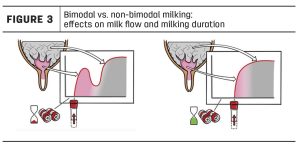
Led by Reps. Joe Courtney, D-Conn., and Glenn “GT” Thompson, R-Pa., the lawmakers sent a letter to Vilsack in support of allowing schools to offer low-fat flavored milk.
“One of the best ways to encourage healthy eating is within the federal school meals program under your jurisdiction,” the lawmakers said.
Students who choose school meals are almost three times as likely to have milk with their lunch as their peers who do not, they said, citing the recent School Nutrition and Meal Cost Study.
Current law requires milk varieties to be consistent with the Dietary Guidelines for Americans and specifically permits flavored milk.
“Accordingly, we believe schools should continue to have the option to offer low-fat flavored milk,” they said.
“Surveys have shown that students drank less milk when all flavored milk was required to be fat-free,” they said, citing one survey that showed a 10.8% decline.
In turn, consumption rose in 58% of schools surveyed when schools were able to offer low-fat flavored milk under waiver authority, they said.
The lawmakers also cited the 2020 Dietary Guidelines Advisory Committee report that found 79% of 9- to 13-year-olds who rely on the school meal programs to meet their nutritional needs are not meeting the recommended intake of dairy foods.
“Both the 2015 and 2020 editions of the Dietary Guidelines for Americans amplified this concern, stating that beginning at a young age, average dairy consumption falls short of recommended amounts,” the lawmakers said.
“This is a significant concern,” they said.
While current USDA flexibilities allow schools to offer low-fat flavored milk through the 2021-2022 school year, USDA has before it a proposed rule that would make them permanent.
Leading dairy groups applauded the lawmakers’ efforts.
“Milk benefits children in many ways — but it can’t benefit them at all if they don’t drink it, and ensuring that they do so requires a wide range of options,” said Jim Mulhern, president and CEO of National Milk Producers Federation.
“Milk’s unique nutritional package is of great benefit to the nation’s schoolchildren, and this message to Secretary Vilsack strongly supports the critical goal of boosting consumption of essential nutrients of public health concern, including calcium, potassium and vitamin D,” he said.“Milk, including low-fat flavored milk, is an important way for children to access the nutrient profile of dairy, providing 13 essential nutrients and unique health benefits,” said Dr. Michael Dykes, president and CEO of International Dairy Foods Association. IDFA strongly encourages the USDA to adopt school milk flexibility in the proposed rule as a long-term solution, he said.
”By doing so, the USDA would help ensure more kids meet the recommended intake for dairy set forth in the 2020-2025 Dietary Guidelines for Americans,” he said.























